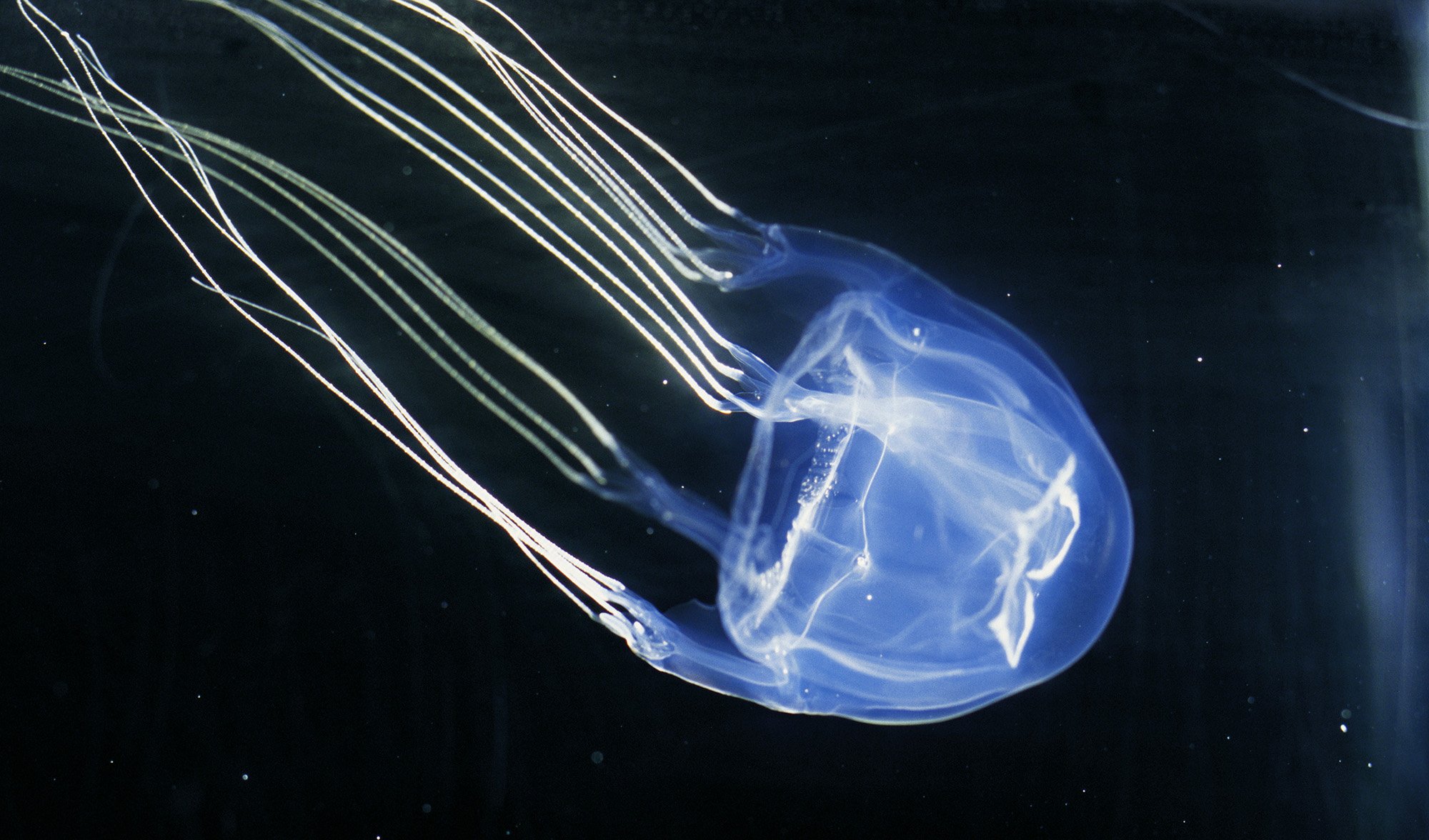

They inhabit parts of the Indian Ocean, Pacific Ocean, and the Great Barrier Reef. For more information on the symptoms and treatment of Irukandji jellyfish check out the QLD Ambulance Service factsheet. Chironex fleckeri, also known as box jellyfish, lives in and around the waters of Australia and Southeast Asia.
Deadly australian jellyfish skin#
If you don’t have access to vinegar, carefully remove the tentacles from the skin and rinse with seawater – not fresh water. If stung, immediately cover the sting with vinegar for a minimum of 30 seconds and call “000”. “Marine Stingers” by Flickr user Zhu licensed under CC BY-NC 2.0īeachgoers are being advised to bring vinegar to the beach, wear protective stinger suits where possible, swim between the flags and follow Life Saver’s advice.

Laboratory experiments have shown that the jellyfish polyps are capable of surviving summer conditions in South East Queensland (Klein et al 2014).īeing stung by these jellyfish can cause a range of symptoms, including severe pain, headaches, hypertension, tachycardia and pulmonary oedema, and have been responsible for at least two deaths and hundreds of hospitalisations. As ocean waters warm, many tropical marine species have been observed moving into sub-tropical waters, with Irukandji being observed as far south as Hervey Bay and Fraser Island as recently as January 2019 (The Guardian 2018). fleckeri he must immediately seek medical attention before it is all too late. Its highly venomous sting causes a human death in as little time as 3 to 5 minutes. The Irukandji season has been lengthening since the 1960s in North Queensland (Carrette and Seymour 2013). The northern Australian box jellyfish (Chironex fleckeri) is truly nature’s deadliest marine invertebrate. The sides allow them to steer through the water and move up to six metres per minute. Transparent in colour, their bell is shaped like a four-sided box, with a cluster of six eyes on each side. The Irukandji jellyfish is spreading further south and its season is lengthening and could eventually be found as far south as the Gold Coast. Their ability to move through the water rapidly rather than drifting like all other jellyfish is due to their shape. In Australia, the peak season for Irukandji jellyfish is during November to May.Īlready this summer, 20 people have been hospitalised with suspected Irukandji stings, which is almost double the 10-year average.Ĭlimate change may be expanding the distribution of deadly jellyfish along Queensland’s coast. The species also occurs in South East Asia, the Caribbean, Hawaii and South Africa¹. "We should be looking for polyps in areas different from those in which we find the adult jellyfish - such as estuaries, oceanic margins and potentially the outlets of springs that carry fresh water via submarine channels to the seabed - known as wonky holes," Dr Rowley said.Irukandji are a venomous species of jellyfish which live in Australian waters. Salinity fluctuations didn't have a major effect but oxygen consumption rates increased with water temperature, with the jellyfish seemingly favouring a stable range of 28-34 degC. "This means instead of the very difficult job of trying to track them in the open sea we can deduce the specific ocean environments where they are likely to be found." Jellyfish Teddy Hartanto/Flickr Their powerful venom lies in their tentacles The box jellyfish itself grows up to 15 tentacles that can reach up to 3m in length. Box Jellyfish Found In The Northern Territory Blue-Ringed Octopus Found In Western And Northern QLD Bull Sharks Found At Every Coastline In Australia.

"The idea is that oxygen consumption will change to the extent the polyps like the environment they are in," Dr Rowley said. The two most deadly jellyfish are the box jellyfish (growing up to 20cm in the body) and the Irukandji jellyfish (about the size of a thumbnail). The scientists subjected 1240 polyps to nine water samples with differing salinities and seven different temperatures while measuring their air intake and physical condition. However Dr Rowley and her colleagues have turned the tables by exposing homegrown Irukandji to different habitat elements in order to narrow the gap. "But despite the significant economic consequences Irukandji bring, our knowledge of the distribution and basic ecology of the polyp stage is very limited."Įarly life cycle specimens of the slippery jellyfish have never been found in the wild while still attached to coral, meaning research has relied exclusively on those laboratory-bred.


 0 kommentar(er)
0 kommentar(er)
